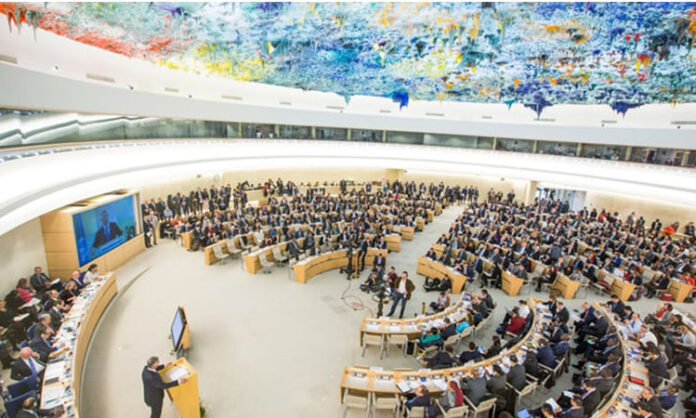NEW YORK: Human Rights Watch (HRW) on Thursday accused Israel of using white phosphorus munitions in its military operations in Gaza and Lebanon, saying the use of such weapons puts civilians at risk of serious and long-term injury.
Asked for comment on the allegations, Israel’s military said it was “currently not aware of the use of weapons containing white phosphorus in Gaza.” It did not provide comment on the rights watchdog’s allegations of their use in Lebanon.
Israel has been bombarding Gaza in retaliation for a Hamas rampage in southern Israeli towns that killed at least 1,300 people this week. At least 1,500 Palestinians have been killed. Israel has also traded barbs with Lebanon’s Hezbollah group.
Human Rights Watch said it verified videos taken in Lebanon on Oct. 10 and Gaza on Oct. 11 showing “multiple airbursts of artillery-fired white phosphorus over the Gaza City port and two rural locations along the Israel-Lebanon border”.
It provided links to two videos posted on social media that it said show “155mm white phosphorus artillery projectiles being used, apparently as smokescreens, marking, or signaling”. Both show scenes near the Israel-Lebanon border, it said.
The group did not provide links to videos showing their alleged use in Gaza. Palestinian TV channels have broadcast video in recent days showing thin plumes of white smoke lining the sky over Gaza that they say was caused by such munitions.
Israel’s military in 2013 said it was phasing out white phosphorus smokescreen munitions used during its 2008-2009 offensive in Gaza, which drew war crimes allegations from various rights groups.
The military at the time did not say whether it would also review use of weaponised white phosphorus, which is designed to incinerate enemy positions.
White phosphorus munitions can legally be used on battlefields to make smoke screens, generate illumination, mark targets or burn bunkers and buildings.
Because it has legal uses, white phosphorus is not banned as a chemical weapon under international conventions, but it can cause serious burns and start fires.
White phosphorus is considered an incendiary weapon under Protocol III of the Convention on the Prohibition of Use of Certain Conventional Weapons. The protocol prohibits using incendiary weapons against military targets located among civilians, although Israel has not signed it and is not bound by it.
Meanwhile, more than 423,000 people have been forced to flee their homes in the Gaza Strip, the United Nations said, following heavy Israeli bombardments in retaliation for Hamas’s attacks.
As of late, the number of displaced in Gaza rose by 84,444 people to reach 423,378, the UN humanitarian agency OCHA said in a statement sent.
The announcement came as Israel pounded the Gaza Strip in response to Saturday’s surprise attack, the deadliest since the country’s creation in 1948. Hamas gunmen swept into small towns, kibbutzim and a music festival in the desert, indiscriminately killing more than 1,200 people and taking about 150 hostages into Gaza. Israel has retaliated by raining air and artillery strikes on Gaza — — a densely populated enclave of 2.3 million people, flattening buildings and killing more than 1,400 people.
Israel has also prepared for a possible ground invasion of the Palestinian territory. “Heavy Israeli bombardments, from the air, sea and land, have continued almost uninterrupted,” OCHA said in its update.
“Multiple residential buildings in densely populated areas have been targeted and destroyed during the past 24 hours.” It said more than 270,000 people — two-thirds of the displaced — have sought shelter in schools run by the UN agency supporting Palestinian refugees, UNRWA.
Another nearly 27,000 people had fled to schools run by the Palestinian Authority, while more than 153,000 people found shelter with relatives and neighbours and in other public facilities. OCHA said that around 3,000 people had already been displaced within the enclave prior to Saturday’s attack.
The bombing campaign has destroyed 752 residential and non-residential buildings, comprising 2,835 housing units, OCHA said, citing numbers from the Gaza Ministry of Public Works and Housing. Another nearly 1,800 housing units have been damaged beyond repair and rendered uninhabitable, it said.
The UN agency also voiced alarm at the significant destruction of civilian infrastructure damaged in the shelling. At least 90 educational facilities, including 20 UNRWA schools and 70 schools run by the Palestinian Authority, have also been struck and damaged, with one of the schools completely destroyed.























